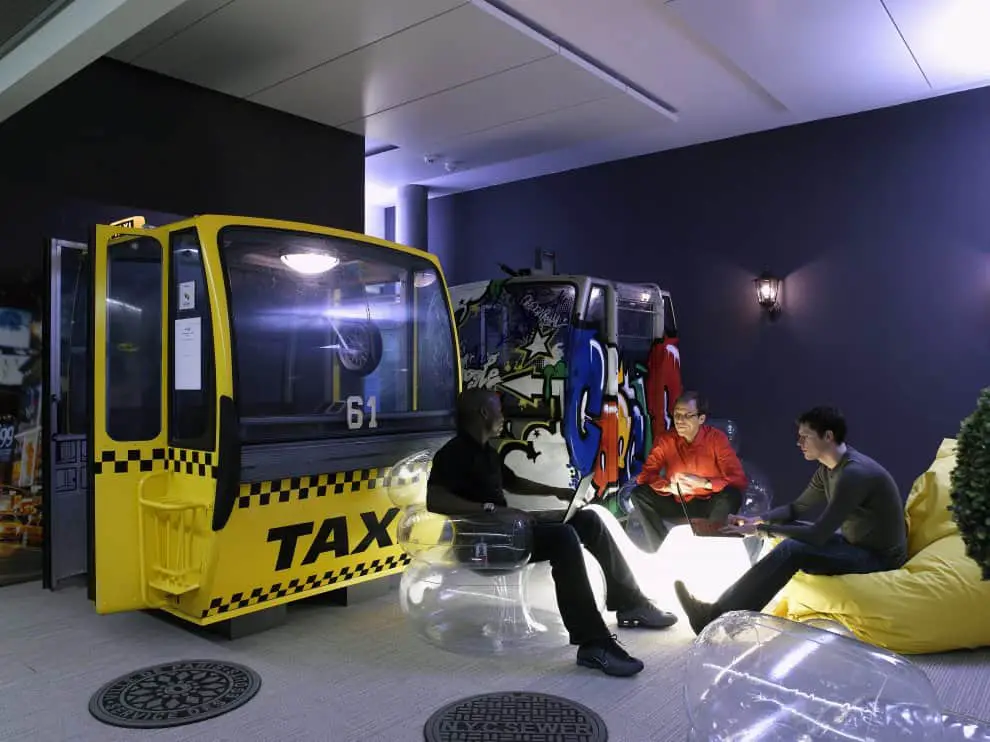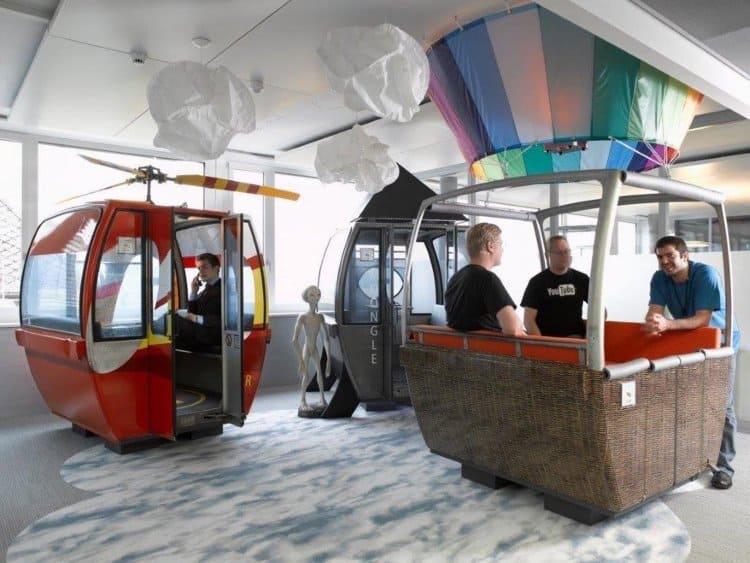Although workplace flexibility is far more common than in previous years, there are still a number of myths that cause hesitation in employers. Understanding the myths and if there is any truth to each one is the beginning of deciding if flexibility is possible for your workplace. If you are seeking reasons to not offer flexible options to your employees, these myths will likely change your mind.
Flexibility in the Workplace
With anything new and different, ideas and expectations arise. Sometimes those expectations prevent people from putting the ideas to work, thus halting any real proof of what it can do for you. Myths can be easily debunked or proven by trying out a few flexibility ideas. In the case of the below 10 myths, know that workplace flexibility is usually a good idea.
1. Flexibility results in less productivity
2. Workplace flexibility is not necessary for most people
3. Flexibility requires building your own schedule
4. Workplace flexibility means working from home
5. Flexibility requires too much effort on the employer’s part
6. Being more flexible causes difficulties in communication
7. Teamwork suffers when workplaces are flexible
8. Flexibility encourages a lack of seriousness
9. Workplace flexibility is expensive
10. Flexibility means part-time

1. Flexibility Results in Less Productivity
Despite the misconception that flexible workplaces are not as productive as those that do not allow flexible schedules or working from home, it is exactly that: a misconception. In truth, studies show that a flexible workplace decreases stress, better work-life balance, and encourages employee well-being. Each of these aspects is known to improve productivity.
Decreased stress comes with a flexible workplace because it is less of a problem figuring out transportation schedules with your kids, having doctor’s appointments, and individuals with a cold don’t have to miss work to avoid getting the rest of the office sick. With flexibility, workers have a greater chance of rearranging their schedule or working from home without causing trouble with the rest of the staff.
An improved work-life balance allows employees to spend time with their families and think about things other than work. It is a break your brain truly needs in order to be able to reset for more work tomorrow. Without this balance employees can become overworked and exhausted.
Well-being is a concept in which an individual is healthy in every aspect of their lives: mentally, physically, financially, socially, and more. Having the ability to focus on the other aspects of one’s life allows a sense of well-being that doesn’t always come with a strict schedule.

2. Workplace Flexibility is Not Necessary for Most People
It is a frequent thought that workplace flexibility is intended for new mothers, students, and part timers. However, flexibility at work is a necessity for all people. Everyone gets sick or just simply works best at a different time than standard working hours. By allowing employees to choose their own schedule, work from home, or even drop to part time hours, employers can encourage their workers to have a better work-life balance. (We have written a related article – 10 Workplace Flexibility Advantages For Moms )
)
A work-life balance is necessary for all people. Too much work can cause stress and create conflict. When there is a balance between work, a social life, adequate sleep, and a hobby or two, individuals will be less likely to feel burnout. Burnout is not good for quality of work or productivity in general.
Although it has been suggested that workplace flexibility is an expectation of younger people, it would benefit workers of all ages. Even those nearing retirement and better having had flexibility prior can have a positive response to the concept, even if they have never considered it a possibility before.

3. Flexibility Requires Building Your Own Schedule
There are some industries in which the flexibility of schedules is less possible. While having the ability to make your own schedule is a nice perk, it is not completely necessary to be a flexible workplace. There are a variety of ways that an employer can offer some flexibility without altering employee hours. (We have written a related article – 25 Ways I Can Improve My Flexibility at Work )
)
For example, industries that require an individual to be present at all times, such as service jobs, have less leeway when developing schedules. If certain schedules are necessary for workers, employers might create them on a first come first serve basis. Managers might also check with employees prior to creating a new schedule to see how each person can be accommodated.
If even this kind of flexibility cannot be offered, there other ways that a workplace can be more flexible. Employing both part time and full time employees is one way. Another would be job-sharing , which is a relatively new term in which two part time people share the job of a single full time.employee.
, which is a relatively new term in which two part time people share the job of a single full time.employee.

4. Workplace Flexibility Weans Working From Home
Like the previous assumption, workplace flexibility does not mean the employees will simply work remotely. Although the ability to work from home is a positive attribute, it is also one that also must be discussed in detail prior to attempting. For instance, many companies require a specific number of hours to be worked in an office on site or attendance at a weekly meeting.
When discussing workplace flexibility, each detail that makes the work flexible does not have to be included. A salesperson might have the ability to choose whether or not they work weekends, but it might be harder to sell something from your home office. Being flexible means offering a few options for flexibility, not necessarily every option. Working from home is just one of those options.
When working from home is an option, employees don’t have to fight traffic, get dressed, or leave work at a certain time to get home. Those saved minutes boost productivity, which can encourage employers to offer a telecommuting option, but it is not required to be truly flexible.

5. Flexibility Requires Too Much Effort On the Employer’s Part
Making changes can be hard early on, but adding some flexibility to your office should not require too much effort. By starting flexible options one at a time, you might find that the slight effort in making the change is well worth it. It is also an opportunity to dial back on changes if you see a change that doesn’t work for your company.
Flexibility does not cost the company much time. You might start by encouraging a minimally sick employee to complete a few work tasks from home. This can open the door to telecommuting more in the future and shows the importance of allowing employees to work from home.
Being a flexible workplace can expand over time. By making changes one at a time, the transition will not seem so difficult. In fact, the benefits experienced by the company will be enough to make the small sacrifices nearly forgettable.

6. Being More Flexible Causes Difficulties in Communication
Many individuals believe that communicating with technology causes miscommunication and challenges in the workplace. However, since using email, text message, and video chat are frequent forms of contact in today’s society, miscommunications are less frequent than previously believed.
If this is still a concern, there are ways to combat the potential issue. A workplace can still be flexible with pre arranged meetings for checking in. If employees were required to have a physical presence at the office every Monday at a designated time, any confusion could be cleared up.
Communicating is a skill that can be adapted to change. If a once a week meeting is necessary, utilize it. Most in the workforce, however, are accustomed to using modern technology as a source of communication and will have little trouble with transferring those skills to the workplace.

7. Teamwork Suffers When Workplaces are Flexible
Although the myth suggests a flexible workplace lacks teamwork altogether, the opposite is actually true. The myth likely comes from the decrease in the total amount of time spent at work with one another, which sounds like a genuine concern. In truth, allowing employees more flexibility shows more trust in their capabilities. Between the feeling of being trusted and desiring to meet the needs and expectations of the company, working flexible hours or from home boosts teamwork in a way that was likely unpredicted.
If employers are seeking ways to get more team interaction, there are a number of ways that flexible employees can do just that. From luncheons to team events after hours to company picnics in the summer, there are ways to increase face to face interaction when many employees so not see each other much at work.
When communication lines are kept open, even when those lines are email or text, spending time together in person is just like seeing an old friend. This means that team events could be monthly and teamwork would still thrive on a day to day basis.

8. Flexibility Encourages a Lack of Seriousness
Because of the appreciation employees have for flexibility, most will not abuse it. This means that hours logged working from home are actually spent working, schedules are built to work his or her most productive hours, and the employee’s job is not considered a means to an end.
Employees enjoy working from home or creating their own hours, so taking advantage of the situation is not in their best interest. While it may help the single mom with her kids or the anxious person with their mental health, the best of employees know that abusing flexibility will either lead to a loss of employment or less flexibility. Both are options not many workers want to risk.
Preventing the abuse of the sysy is possible with modern technology. There are programs that track activity on the employee’s work computer. Other programs will take a screenshot of the computer periodically and send it to management. If employees are spending their working hours browsing social media or shopping online, it will be known. Safety measures such as these make flexibility easier to enact.

9. Workplace Flexibility is Expensive
Becoming a flexible workplace does not require the expense that many seem to believe. While most employers pay for the laptops required to work from home, that is an expense that is typical of any office. Rather than purchasing a desktop for on site work only, provide a laptop for a mobile option.
Additionally, having telecommuting employees will save companies the expense of providing pens, paper, paperclips, use of a copier, coffee in the break room, and a variety of other everyday items. When employees work from home they are expected to have their own supplies. Very few employees purchase all of the necessities of an office. The desk, chair, and other furniture are likely not expected to be paid for by the company.
The only other potential expense might be a phone line. In many cases, a company cell phone is provided. That phone can also have the ability to act as a hotspot if wifi is a concern. Providing this one thing to a work from home employee can kill two birds with one stone.

10. Flexibility Means Part-Time
Not only does a flexible career not have to be part time, but the assumption makes it seem as though part time is less important work. Part time employees can contribute plenty of value to a business. Employees requiring the flexibility of part time employment are equally as important to the initiative as full time employees.
Being part time can allow workers the time to go to school, be home with their children more, or focus on their health. If an employee requires fewer hours in order to have the balance needed, an employer willing to give them that will likely have a more dedicated employee than before. Part time does not mean less ambitious.
It is likely that part time work is not permanent. That being said, employees working part time are going to work harder so that they can switch back to full time when necessary. The ability to choose when you can return to your normal full time schedule is a bit of flexibility that would help retention.
Is Workplace Flexibility for Me?
After making an effort to discover the truth about workplace flexibility, you may be wondering if it is something that could help you and your employees. While that decision is ultimately yours (or your boss’s), knowing the improvements you will likely see in the office and overall productivity should inspire you to make some changes. Workplace flexibility is the future. (We have written a related article – How Can I be More Flexible at Work? )
)
Staying relevant requires keeping up to date with the times. An employer that is unwilling to make changes is likely one that will be struggling in 10 years. Keeping employees for the long term is essential to building a successful workforce.
Related Questions
How many companies offer flexible work? Despite extreme growth in recent years, fewer employees offer flexible work than imagined. Telecommuting, for example, is only offered by 7% of employers. (Check out the latest flexible jobs at Felxjobs.com )
)
What percentage of workers expect workplace flexibility? In the millennial generation, 77% desire a flexible workplace. Studies show that more and more older generations are coming to want the same things. (We have written a related article – How many people work from home )
)
What are the most common forms of workplace flexibility? Part time work is incredibly common. In recent years, this was because it allowed employers to have workers, but they didn’t have to pay for those employees’ health insurance. (We have written a related article – What Are The Attributes of Workplace Flexibility? )
)

